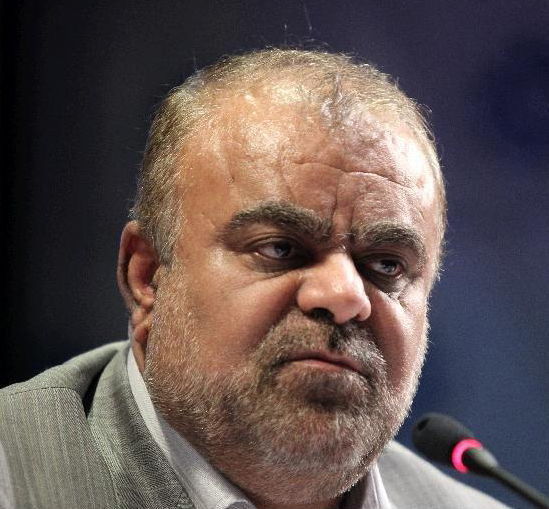Iran's oil industry is committed to cut its dependence on foreign equipments and technical services in near future, Oil Minister Rostam Ghasemi said here Monday, Press TV reported.
He made the remarks in a meeting with Christian staff members of Petroleum Ministry on the occasion of felicitating the Christian New Year, 2012.
"Tehran has no worry about its technical needs and is capable of building whatever its oil industry needs," the oil minister added.
He noted that Tehran is self-sufficient in various industrial fields, including the military industry.
"Iran has one of the most modern defense systems and it is not dependent on foreign help. Landing of one of the most sophisticated US spy drones proved the ability of the Iranian experts in the military industry," Ghasemi underlined.
In 2010, was the second-largest exporter among the Organization of Petroleum Exporting Countries.
Following the Iran-Iraq War, Iran maximized exports of oil and accelerated economic growth. From 1979 until 1998, Iran did not sign any oil agreements with foreign oil companies. Later on, in years between 1997 and 2004 Iran invested more than US dollars 40 billion in expanding the capacity of existing oil fields and discovering and exploring new fields and deposits. These projects were financed either in the form of joint investments with foreign companies or domestic contractors or through direct investment by the NIOC. In accordance with the law, foreign investment in oil discovery was possible only in the form of buyback agreements under which the NIOC was required to reimburse expenses and retain complete ownership of an oil field. Marketing of crude oil to potential buyers was managed by the NIOC and by a government enterprise called Nicoo. Nicoo marketed Iranian oil to Africa, and the NIOC marketed to Asia and Europe.
In the early 2000s, leading international oil firms from China, France, India, Italy, the Netherlands, Norway, Russia, Spain, and the United Kingdom had agreements to develop Iran's oil and gas fields.
Several major emerging economies depend on Iranian oil: 10 percent of South Korea's oil imports come from Iran, 9 percent of India's and 6 percent of Chinese. Moreover, Iranian oil makes up 7 percent of Japan's and 30 percent of all Greek oil imports. Iran is also a major oil supplier to Spain and Italy.
Since 1979, infrastructure investment by Iranian and foreign oil firms has increased pipeline capacity to support the Iranian gas industry. Between 1979 and 2003, pipelines to transport natural gas to refineries and to domestic consumers increased from 2,000 kilometers to 12,000 kilometers. In the same period, natural gas distribution pipelines increased from 2,000 kilometers to 45,000 kilometers in response to growing domestic consumption. Gas processing plants are located at Ahvaz, Dalan, Kangan, and Marun, in a corridor along the northern Persian Gulf close to the major gas fields. South Pars, Iran's largest natural gas field, has received substantial foreign investment. With its output intended for both export and domestic consumption, South Pars is expected to reach full production in 2015. The output of South Pars is the basis of the Pars Special Economic Energy Zone, a complex of petrochemical and natural gas processing plants and port facilities established in 1998 on the Persian Gulf south of Kangan.






